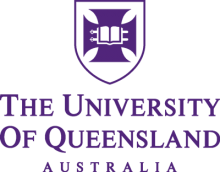An Australian university has countered a year of financial devastation by putting hundreds of millions of dollars aside for another rainy day.
The University of Queensland (UQ) increased the size of its Future Fund by an order of magnitude, transferring some A$350 million (£194 million) from other investments and an unexpectedly robust 2020 surplus.
Vice-chancellor Deborah Terry said that the pandemic had “reinforced the value” of the Future Fund, established in 2019 as “a meaningful buffer against future economic shocks”.
She said that reserves in the fund were invested in perpetuity, yielding higher returns than they could attract in shorter-term portfolios. Earnings were ploughed back into the fund, with a portion distributed to the university for “strategic purposes”.
The university heeded the 2018 advice of chancellor Peter Varghese when he counselled the sector to squirrel away proceeds from the then booming international education industry. Mr Varghese told an Adelaide conference that universities should not “turn their back” on student revenue from countries such as China, notwithstanding escalating tensions between Canberra and Beijing.
“But it would be wise to invest the profit margin for the longer term, not use it for current expenditure,” he said. “Put it into a future fund or endowment, which would give universities a measure of resilience in [case] the market abruptly shifts.”
Although 2020 tested universities’ resilience, developments enabled UQ to augment its fund. Vice-chancellor Terry said UQ had moderated its building plans during the pandemic, enabling it to “accelerate” the fund’s growth.
“While the 2020 results were better than anticipated, uncertainty about the future for international education markets remains,” she said. “We will continue to take a prudent approach.”
UQ is one of 11 Australian universities so far to release their 2020 financial accounts. Its annual report shows that the Future Fund’s balance mushroomed from about A$35 million to A$388 million last year.
A$130 million came from short-term deposits containing advance payments for tuition and research. Another A$120 million came from medium-term investments set aside for capital works, and the rest came from the university’s 2020 surplus.
The university also added almost A$50 million to a long-term philanthropic fund containing endowments accumulated over a century, thanks to fresh donations and healthy investment earnings.
UQ weathered last year’s crisis without resorting to forced redundancies, notching slight increases to permanent and fixed-term staffing levels and even overseas student enrolments. Other Queensland and Western Australian institutions achieved similarly upbeat results, with six reporting surpluses, five increasing their overall enrolments and at least six boosting staff numbers.
This was achieved despite universities’ ineligibility for the JobKeeper wage subsidies that kept many Australian employers afloat. UQ subsidiaries involved in sport, healthcare, research commercialisation and mining services proved an exception, sharing almost A$8 million in JobKeeper subsidies – money the university subsequently repaid because of its “better-than-expected 2020 performance”.
Sport and recreation subsidiaries of the University of Western Australia (UWA) also received JobKeeper subsidies. UWA did not reveal how much, but said that the money had “enabled the entities to continue to support their staff”.
Register to continue
Why register?
- Registration is free and only takes a moment
- Once registered, you can read 3 articles a month
- Sign up for our newsletter
Subscribe
Or subscribe for unlimited access to:
- Unlimited access to news, views, insights & reviews
- Digital editions
- Digital access to THE’s university and college rankings analysis
Already registered or a current subscriber?










